-
kevinkk

- Premium Member - 2025

- Posts: 534
- Joined: Mon May 23, 2022 5:06 pm
refrigeration of adult lepidoptera and lifespan
by kevinkk » Fri May 09, 2025 2:39 pm
The issue I am wondering is can this effect fertilility. One of last year's buyers told me they were refrigerating adults while waiting for another of the opposite sex.
Now I recieve email mentioning low fertility, it's a concern, because now I either end up with possibly some 500 caterpillars I can never take care of,
or lose money dolling refunds later.
I can see where this might work, but I think temperature would be a factor.
Before you ask, the parents were wild caught in June of 2024 and I raised the larva.
-
wollastoni
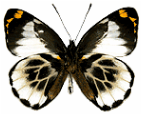
- Site Admin

- Posts: 682
- Joined: Fri Mar 18, 2022 9:51 am
Re: Resource Limit 508 - Russian attack
by wollastoni » Fri May 09, 2025 1:24 pm
I have also add some anti bots measures in our htaccess file and so on.
I hope it will be enough. There are other solutions but at a high price...
-
Chuck

- Posts: 1440
- Joined: Mon May 23, 2022 2:30 pm
Re: Resource Limit 508 - Russian attack
by Chuck » Fri May 09, 2025 12:50 pm
I wonder if the hosting company can be asked to limit traffic (ie block masses of DoS messages).
-
wollastoni

- Site Admin

- Posts: 682
- Joined: Fri Mar 18, 2022 9:51 am
Re: Resource Limit 508 - Russian attack
by wollastoni » Fri May 09, 2025 10:05 am
We had another attack yesterday.
I have now activated a Cloudflare protection to the forum to avoid bots ruining the server.
There is now a security page checking you are human before accessing the forum.
Hope it will help
Olivier
-
biscuit153

- Premium Member - 2025

- Posts: 14
- Joined: Tue May 24, 2022 3:40 am
Re: Glass Fumigant Holders
by biscuit153 » Thu May 08, 2025 4:13 am
https://lenaturaliste.ca/products/glass-fumigant-holder
-
Trehopr1
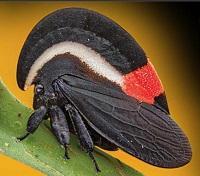
- Global Moderators

- Posts: 1133
- Joined: Thu Mar 31, 2022 1:48 am
Re: RIP Bernard Turlin
by Trehopr1 » Wed May 07, 2025 6:30 pm
His personal collection is OUTSTANDING in the depth of whatever group he had an interest in. I think it is wonderful that he is "sharing the wealth" of his collection (through auction) for others to enjoy and admire in their lifetimes.
He will certainly be remembered as a towering figure of knowledge and tireless passion among modern lepidopterists.
-
wollastoni

- Site Admin

- Posts: 682
- Joined: Fri Mar 18, 2022 9:51 am
Re: Rare Delias butterflies
by wollastoni » Wed May 07, 2025 2:46 pm
More info about that species : https://www.delias-butterflies.com/spec ... as-taliabu
Its discovery was a great surprise.
-
wollastoni

- Site Admin

- Posts: 682
- Joined: Fri Mar 18, 2022 9:51 am
Re: RIP Bernard Turlin
by wollastoni » Wed May 07, 2025 2:25 pm
Bernard TURLIN passed away on November 12, 2024, after a very brief illness. Born on September 18, 1944, he spent his childhood in Conflans-Sainte-Honorine, a region of boatmen between the Seine and Oise rivers, where his father Marcel, under the pseudonym MAT, was a magazine illustrator, comic book artist, and creator of characters such as Pitchounet and Oscar, the little duck. Bernard grew up in this environment of wordplay, puns, and creativity. His father loved to observe butterflies for their beauty, and Bernard often accompanied him in the garden of their home.
At the age of 10, while on a summer camp in the Pyrénées-Orientales, he discovered a Charaxes jasius that had fallen to the ground. This marvelous find led him to make a small net and pin a few butterflies to the bottom of a cardboard box. Later, equipped with more appropriate equipment, he began a real amateur collection. At the age of 16, he entered teacher training college. In 1960, he knocked on my door (PB) to ask me to teach him how to hunt butterflies in the coastal dunes of the Cotentin. In 1963, we embarked on our first entomological trip from the Jura to the Alps. This was my first encounter with Parnassius apollo. In the years that followed, we happily met up again for other entomological adventures across the Massif Central, the Southern Alps, and the Pyrenees. I let myself be guided, as Bernard already knew a great deal about butterflies. After retiring, Bernard still enjoyed returning to the places of his youth with his wife.
Java
In 1964, he got his first job as a teacher in the Paris region. Then in 1965, he joined his brother Guy, an engineer in Indonesia (West Java), at the site of a large dam under construction, to teach the children of expatriates. This was his first encounter with the rich fauna of Asia, with its many Papilio and Graphium butterflies and, in a forest further south, the capture of Troides helena. In the evening, by the light of the street lamps, he caught Sphingidae and Saturniidae, including the largest of them all, Attacus atlas. This stay in Asia was another revelation for him.
Madagascar
In 1967, he obtained a teaching assignment with the Ministry of Cooperation and was lucky enough to be sent to Madagascar to train teachers. Appointed to Tananarive, his nearest collecting site was La Mandraka, a cliff that descends from the 1,200-meter-high plateaus to the eastern forest. At that time, traps for Charaxes did not exist, and only a few males were collected on the ground when they drank on the wet sand with endemic Papilio and Graphium. During his vacations, Bernard traveled to southwestern Madagascar, where the climate is dry, even very dry, and the vegetation is very unusual. There he captured the largest butterfly in Madagascar, Pharmacophagus antenor, whose caterpillars feed on Aristolochia. Near Tulear, he discovered an unknown species of the Lycaenidae family on thorny bushes. This was Lepidochrysops turlini, described in 1971 by H. STEMPFFER. For his nighttime collections, Bernard acquired a small generator to light up the landscape and attract butterflies to a white sheet with a 160 W bulb producing UV rays, protected from the rain by a hunting shelter of his own design. At his station in Beparasy, he discovered a new sphinx moth for the Big Island, which Philippe DARGE named Antinephele lunulata turlini, later elevated to species status. He married Adeline there in March 1971.
Rwanda
In 1972, Bernard had to leave Madagascar due to a revolution. A few months later, he obtained a new position in Rwanda as a teacher in the small French school in Butaré. The nearest high-altitude station was the Nyungwe Forest. He settled in the university refuge of Wincka, at 2,450 meters, for night hunting. For five years, Bernard made numerous daytime and nighttime collections, which he sent to eminent French specialists. This led to numerous publications, in particular by Claude HERBULOT for Geometriddae, Hervé DE TOULGOËT for Arctiinae, and Claude LEMAIRE for Saturniidae. Dozens of types came from his hunts, and nearly 40 Heterocera were named turlini, as well as a number of Charaxes, captured in fermented banana traps, such as Ch. acuminatus, Ch. xiphares, Ch. druceanus, Ch. ansorgei (rare) and Ch. alticola. He also discovered a new Acraea described by Jacques Pierre in 1979 (Acraea turini). Further down, in open forest, Bernard discovered a new Charaxes belonging to the small black group, soon named Charaxes turlini by Minig & Plantrou, with its many female forms. From Rwanda, Bernard made a few forays into neighboring Kenya, until he reached the rich coastal forest. In 1977, he returned to France for good, where he visited the best sites of entomological interest. But he also used his school holidays for more distant explorations, driven by a desire to discover more and more in countries that were often difficult to access and where few entomologists had explored.
Mediterranean and Atlantic islands
His goal was also to explore most of the islands in the Mediterranean, some of which are home to endemic species. From west to east, he visited the Balearic Islands (Mallorca), Corsica, Sardinia, Sicily, Crete, Rhodes, Samos, and Cyprus.
He also visited the Spanish and Portuguese island groups scattered across the Atlantic Ocean in search of endemic species or subspecies: the Canary Islands (in 1990, Tenerife and La Gomera; in 1996, La Palma and El Hierro. In 1996, he also visited Madeira. In 2011, he visited the Azores with four short stays in Fatal, Pico, Terceira, and Sao Miguel in a single trip.
Central Asia
In 2006, Bernard was part of an expedition to Kyrgyzstan organized by the ALF. Visiting the highest passes at over 3,000 meters, he returned with numerous species of Parnassius, lycena, and Erebia.
Africa
In 1986, a trip to Ivory Coast introduced him to some West African lepidoptera. He found the country horribly deforested. In April 1997, invited to Zimbabwe, Bernard collected the rare Charœxes of this country: Ch. gal-lagheri, Ch. druceaniis stevensoni, and Ch. mac-clounii. In 2010, invited to South Africa, he hunted in the two Cape provinces (west and east), which have a Mediterranean climate. Among his collection of Charaxes, we note Ch. xiphares, Ch. pelias (endemic) and Ch. karkloof; at night, he collected a few Saturniidae and Sphingidae: Henochia apollonia, Vegetia dewitzi (a rare species), Theretra capensis and Macropoliana natalensis.
Yemen
Bernard took part in two trips to Yemen, in 1993 and 1999, organized with friends from the ALF. At that time, the situation was still safe, between two wars! He captured a special Papilio, P. saharae ratjensi, which flies between 1,800 and 2,400 meters above sea level, and the three Charax endemic to Yemen, Ch. ï ansali) yemeni, Ch. varanes torheni and Ch. bernstorffi, a small endemic species of the “black complex.” At low altitudes, along the Red Sea, the climate is extremely hot. He observed 11 species of the genus Coloris (Pieridae) in a single day and, in the same place, three species of Lepidochrysops (Lycaenidae)!
Indian Ocean islands
Bernard explored all the Comoro Islands in four visits: in 1983, Grande Comore (G.C.) and Mayotte; in 1988, G.C. and Anjouan; in 1989, G.C. and Mohéli; and in 2001, Mayotte. The cumulative results for the seven islands enabled him to write a 10-part monograph between 1994 and 2002. He built up reference collections for each of his trips.
Always accompanied by his wife, Bernard also visited the two islands that make up the Mascarene Islands: Mauritius (2001), where he rediscovered Lycaenidae Cyclyrius mandersi, which was thought to be extinct, and Réunion Island.
Eastern Europe and Asia Minor
In the Palearctic zone, Bernard focused his research on Greece and Turkey and the main islands of the Mediterranean. He visited Greece four times and Turkey five times. Greece has a very rich fauna; he returned there in 1994, 2002, 2007, and 2008, on different dates, in order to find the various species that appear throughout the seasons. He traveled throughout Turkey on five trips: four times in April (1988-1991) and then in July/August 1992. It was then that he discovered the Parnassiinae endemic to these regions, such as the Ar- chon and Allancastria.
Southeast Asia
Southeast Asia was what sparked his greatest interest. After a stay in Java (1965-1966), Bernard and his wife visited Sri Lanka (Ceylon) for a month in 1982, then, in 1987, southern India, where he found the same species of Colotis as in Africa, along with many other local species. But Indonesia was his favorite country: there were so many species flying there, with such great diversity and so much endemism in the numerous island groups. He visited West Malaysia four times and also Sabah (1995), the northern part of Borneo, which is part of Malaysia. During these trips, as on the island of Langkawi (western Malaysia) in August 2004, Bernard used his banana traps to attract local Charaxes and Polyura and went on night hunts to capture sphinxes, Saturnids, and Euptérotids.
He visited Bali several times, then Sumatra (1979), the Moluccas archipelago (2011) and Sulawesi three times (1991, 1997 and 2008). He got to know many local hunters who also served as his guides.
The furthest place from France that he visited three times (1997, 2009 and 2017) was Irian Jaya (West Papua, Indonesia), the ideal place to search for Delias, a species of Pieridae that he particularly liked. Further north, on the island of Biak, Bernard found many endemic species.
Japan
During meetings in Juvisy and Frankfurt, and through correspondence, he got to know many Japanese dealers and collectors. He made numerous exchanges and was invited to Osaka by Mr. Motoki Saito in 1998 to visit university collections and give a lecture translated into Japanese at the university.
His collections
Bernard divided his collections into two parts, as exhaustively as possible.
The main collection concerns the following groups:
- Ornithoptera, for their beauty,
- Parnassiinae in all genera and especially Parnassius: an almost complete collection for the entire genus (the 2005 publication with Luc MANIL, winner of a prize from the Entomological Society of France, is an accessible guide for specific identifications),
- African Charaxinae, with more than 8,000 specimens, including the genera Palla and Euxanthe, with numerous paratypes, forms, aberrations, gynandromorphs, and natural hybrids,
- Asian Charaxes ei Polyura: Between 2005 and 2020, Bernard published an update of all the Charaxinae of the Old World in Butterflies of the World, a series edited by E. BAUER and the late T. FRANKENBACH (11 fascicles),
- the genus Deltas, which was one of his favorites.
The memory collections (as he called them) consist of a sample of butterflies captured during trips undertaken over a period of some 60 years in Africa,
Asia, the Mediterranean basin and the Atlantic islands, and during a single trip to Kyrgyzstan. He kept a sample of each species collected, very often a pair of all the diurnal butterfly families. He added the Saturniidae and Sphingidae, but only those he collected himself. These travel collections enabled Bernard to publish numerous articles on the countries he visited. They also provided material for presentations at ALF meetings and entomological gatherings such as the summer meetings in Valletta. He enjoyed recounting his expeditions to his neighbors and at his local senior citizens' club, and above all showing off his most beautiful butterfly specimens.
This brief biography shows how Bernard was above all a man of action, a tireless and passionate explorer, always seeking to push his research to its limits. His collection had to be complete in the groups he loved. During his travels, he accumulated thousands of pieces of data, not only on the butterflies he observed, but also on the nature he encountered, its plants, animals, geography, and the people he met. His phenomenal memory amazed us all. He knew the names and distribution of a large number of Lepidoptera. He was always keen to pass on his knowledge and help children and adults alike discover the beauty of nature.
Thank you, Bernard!
His passing leaves a cruel void for many of us. We are left with his publications and scientific articles, which are essential for our young entomologists who, unfortunately, will not be able to follow in Bernard's exemplary footsteps in today's particularly unstable and restrictive world. The dozens of species that will forever bear his name will also remain for eternity.
Bernard, your entomological research is truly remarkable, and you have passed on some of your knowledge to us. Be proud of your work and rest in peace!
-
wollastoni

- Site Admin

- Posts: 682
- Joined: Fri Mar 18, 2022 9:51 am
Re: Bernard Turlin collection in Auction.
by wollastoni » Wed May 07, 2025 1:55 pm
An obituary has been published in the French Lepidopterist Association review. I have translated it in the topic dedicated to Bernard's death : viewtopic.php?p=13250#p13250
-
Trehopr1

- Global Moderators

- Posts: 1133
- Joined: Thu Mar 31, 2022 1:48 am
Re: Bernard Turlin collection in Auction.
by Trehopr1 » Tue May 06, 2025 5:40 pm
Was he an authority on any other African genera ?
Is there anyone here that can tell us a little bit more about this fascinating researcher and his travels ?
-
58chevy
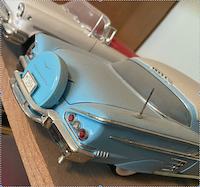
- Posts: 497
- Joined: Mon May 23, 2022 5:58 pm
Re: Ceanothus Silkmoth (Hyalophora euryalus)
by 58chevy » Mon May 05, 2025 11:23 pm
-
wollastoni

- Site Admin

- Posts: 682
- Joined: Fri Mar 18, 2022 9:51 am
Re: Bernard Turlin collection in Auction.
by wollastoni » Mon May 05, 2025 5:02 pm
Many top rarities.
-
adamcotton
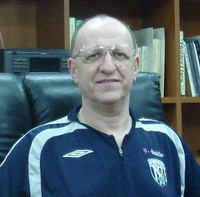
- Global Moderators

- Posts: 1112
- Joined: Tue Mar 22, 2022 12:24 pm
Re: what is the point?
by adamcotton » Mon May 05, 2025 3:53 pm
Adam.
-
adamcotton

- Global Moderators

- Posts: 1112
- Joined: Tue Mar 22, 2022 12:24 pm
Re: Insect identification assistance.
by adamcotton » Mon May 05, 2025 3:42 pm
You should post the request in the Insect identification section at viewforum.php?f=6 rather than here, more people will see it there.
Adam.
-
adamcotton

- Global Moderators

- Posts: 1112
- Joined: Tue Mar 22, 2022 12:24 pm
Re: Ceanothus Silkmoth (Hyalophora euryalus)
by adamcotton » Mon May 05, 2025 3:34 pm
That should work. I think that he can reply to PMs sent by other members.eurytides wrote: Mon May 05, 2025 12:05 pm Does it work the other way? Can 58chevy send a message and then Tfytrbl can reply to it?
Adam.
-
Chuck

- Posts: 1440
- Joined: Mon May 23, 2022 2:30 pm
Re: what is the point?
by Chuck » Mon May 05, 2025 1:51 pm
Other forums I'm on have manual approval. The mods report it's mostly "block" block block block, and every now and then a bot gets approved, but most are caught before they can post anything.wollastoni wrote: Mon May 05, 2025 1:41 pm Hello all, unfortunately bots are now plugged in with AI and they are very hard to stop from registering to a forum.
Chuck, they will now perfectly answer your question...
-
wollastoni

- Site Admin

- Posts: 682
- Joined: Fri Mar 18, 2022 9:51 am
Re: what is the point?
by wollastoni » Mon May 05, 2025 1:41 pm
Chuck, they will now perfectly answer your question...
-
Prawbow

- Posts: 1
- Joined: Mon May 05, 2025 12:52 pm
Insect identification assistance.
by Prawbow » Mon May 05, 2025 12:55 pm
-
Chuck

- Posts: 1440
- Joined: Mon May 23, 2022 2:30 pm
Re: what is the point?
by Chuck » Mon May 05, 2025 12:44 pm
FWIW, anyone can make the source look Russian, or whatever. I get spam all the time at work, and our security system is a bit advanced, it can trace the source better than this forum, and it's more often not Russia, nor Japan (like many are faked to be), it's China.
Not to fault our Chinese members; we are all scientists. There are nefarious attackers and bots everywhere.
-
Jshuey
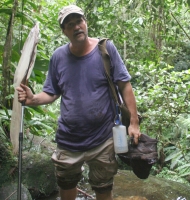
- Global Moderators

- Posts: 206
- Joined: Tue Mar 22, 2022 2:27 pm
Re: what is the point?
by Jshuey » Mon May 05, 2025 12:07 pm
John
